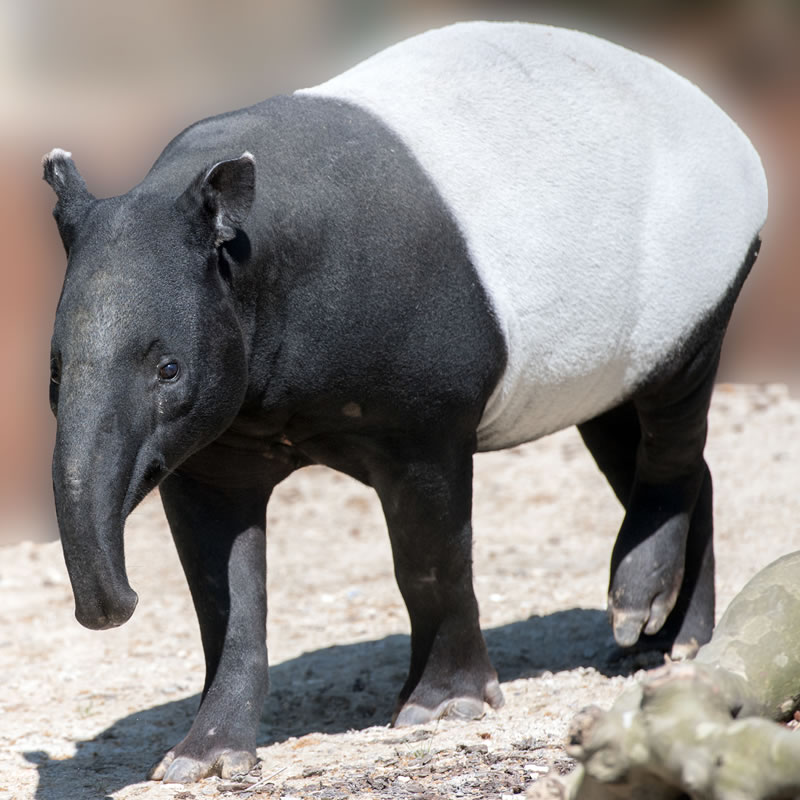
Scientific Name
Tapirus indicus
Classification
| Kingdom | Animalia |
| Phylum | Chordata |
| Class | Mammalia |
| Order | Perissodactyla |
| Family | Tapiridae |
| Genus | Tapirus |
| Species | indicus |
IUCN Redlist Status

Location
Malayan tapirs are located in southeast Asia, in countries such as Thailand and Burma. They can also be found on the island of Sumatra.
Habitat
Malayan tapirs inhabit the forests and tropical rainforests of these countries, and often will remain near sources of water such as streams or rivers.
Diet
They feed on grasses, fruits, leaves, aquatic vegetation, and twigs.
Size
These are large animals, and can grow to be 7 - 8 feet in length. They range from 3 - 4.5 feet in height. They usually weigh between 550 and 750 lbs, but larger animals can weigh over 1,000 lbs. Females are generally larger than males.
Description
At first glance Malayan tapirs may resemble large pigs. They are, however, more closely related to zebras, donkeys, horses and rhinoceros. All of these animals fall into the order Perissodactyla, or odd-toed ungulates (ungulates meaning "having hooves"). Malayan tapirs are considered odd-toed ungulates because they have 3 toes on their hind feet.
Adult tapirs are covered in short, stiff hairs across their bodies. The front half of their bodies, as well as their bellies and rear legs, are covered in black hairs. Their sides and backs are covered in white hairs. This coloration helps to confuse predators and provides a sort of camoflauge. Having short hairs rather than long hairs is helpful to Malayan tapirs so that they will not tangle in the thick vegetation of the rainforest when they are attempting to escape predators. Tapirs' bodies are narrow which also helps them to move quickly through the dense vegetation.
Their heads are shaped a little like the heads of anteaters, with long snouts protruding down their faces. While anteaters use their long snouts to grab ants, tapirs use theirs to pick at underwater vegetation and low-hanging fruit. Two ears are set far back on top of their heads. Malayan tapirs have small eyes and poor eyesight. They rely on hearing and smell to find food and detect danger.
Reproduction
Female tapirs' gestation periods last about 13 - 13.5 months. They often give birth to one offspring. This slow reproductive cycle means that Malayan tapirs are more sensitive to habitat loss because they cannot adapt as quickly.
Other Facts
Malayan tapirs are listed as threatened by IUCN due to habitat loss.
